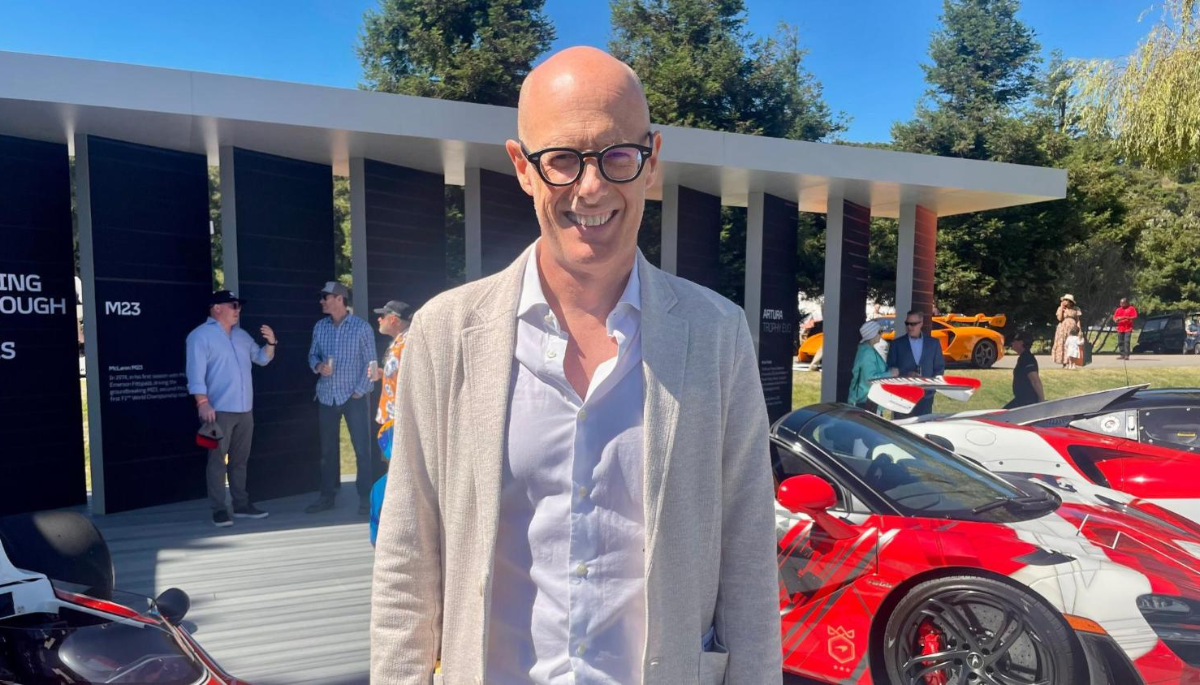
Porsche new CEO
It was a masterclass in corporate stage management. On October 17, 2025, Porsche AG’s Supervisory Board issued a polished press release announcing a new era. Dr. Michael Leiters, a decorated engineer with a glittering resume spanning Porsche, Ferrari, and McLaren, would take the helm as Porsche new CEO on January 1, 2026. He would succeed the decade-long chief, Dr. Oliver Blume, who was showered with praise for delivering “record financial years” and “historic motorsport successes”. Dr. Wolfgang Porsche himself expressed his full confidence in Leiters to navigate the “current challenges”.
But behind the curtain of this orderly transition, a financial hurricane was making landfall. The timing, you see, was no accident. It was a calculated move to control a devastating narrative. Just one week later, on October 24, Porsche was scheduled to unveil its third-quarter earnings, and the numbers were grim. Analysts were forecasting a staggering operating loss of €611 million a shocking reversal from the €974 million profit booked just a year prior.
Let’s be clear: this wasn’t a coronation. It was a battlefield promotion. Leiters isn’t being handed the keys to a finely tuned 911; he’s being asked to take the wheel of a company skidding towards a guardrail. His appointment is that of a “turnaround Porsche new CEO,” a specialist brought in not to maintain course, but to perform emergency surgery on one of the world’s most revered automotive brands. He inherits a litany of old, festering problems that have finally come home to roost, threatening the very soul of Porsche.
The Anatomy of a Crisis: The Failed “Doppelrolle” Experiment
To understand how Porsche, the long-reigning king of profitability, found itself in this mess, you have to look back to 2022. That’s when outgoing Porsche new CEO Oliver Blume made a fateful decision. Upon his promotion to CEO of the entire Volkswagen Group, he insisted on keeping his job as the head of Porsche, a separately listed public company.

He called it a synergy. He argued that running both the colossal VW mothership and its nimble sports car subsidiary would benefit both. The market called it something else: a disaster waiting to happen.
The backlash from investors, analysts, and even unions was immediate and relentless. This “Doppelrolle,” or dual role, was seen as a textbook case of poor corporate governance. How could one person give their full attention to two massive, publicly traded companies, each facing its own existential challenges? Hendrik Schmidt of DWS, a major asset manager, derided the setup, calling Blume a “part-time Porsche new CEO“. Ingo Speich of Deka Investment was even more blunt, telling Blume at a shareholder meeting to “Choose a company. Focus on one task”. The criticism even came from inside the house. VW’s own Works Council Chair, Daniela Cavallo, declared, “The Porsche new CEO cannot be a part-time boss. This situation must end”.
This wasn’t just a theoretical governance debate. The divided attention had real, tangible consequences. Reports began to surface of Blume’s frequent absences from Porsche’s headquarters in Zuffenhausen, leading to critical decisions being delayed. At a time when the automotive world was shifting underfoot with a technological revolution in China and a complex EV transition at home Porsche was effectively rudderless. The company’s ability to react with the speed and agility that defined its engineering was crippled by a Porsche new CEO stretched too thin.
The stock market, the ultimate arbiter of corporate performance, delivered a brutal verdict. Since Porsche’s much-hyped IPO in 2022, its stock has lost roughly half its value. Parent company Volkswagen’s shares have fared little better, dropping nearly 30% during Blume’s tenure. The appointment of Leiters is, in many ways, an admission of failure a move explicitly designed to end “months of investor uncertainty and governance criticism”. It was a self-inflicted wound that turned a series of difficult challenges into a full-blown, multi-billion-euro crisis.
The Five Fronts of Leiters’ War
Michael Leiters isn’t just facing one problem; he’s walking into a multi-front war. These five crises are not independent issues but a tightly interconnected doom loop, where failure in one area cascades, amplifying the damage in the next.
The Great Wall: The Collapse in China
Nowhere is the crisis more acute than in China. For years, the country was Porsche new CEO’s golden goose, its largest and most profitable single market. Today, it’s the company’s biggest liability.
The numbers are breathtaking. After peaking at 95,671 cars sold in 2021, deliveries have fallen off a cliff. In 2024, sales plummeted by a staggering 28% to just 56,887 vehicles. The freefall continued into 2025, with sales in the first nine months more than halving from the same period in 2022.
What happened? In short, Porsche brought a knife to a gunfight. Its brand, built on a century of mechanical perfection, ran headfirst into a market that now values software and in-car technology above all else. A new wave of domestic Chinese luxury EV brands like Xiaomi, Nio, and BYD’s high-end Yangwang marque have completely rewritten the rules. They are delivering vehicles with cutting-edge infotainment, autonomous features, and battery tech that make established German offerings look dated.
The Xiaomi SU7 is a particularly painful example a car that looks strikingly similar to Porsche’s Taycan but sells for half the price and has earned rave reviews for its technology. This isn’t just about price; it’s a fundamental failure of Porsche to understand what the modern Chinese luxury buyer wants. As analyst Tu Le of Sino Auto Insights bluntly put it, Porsche is simply “not the brand (to have) anymore” in China. The company is now in full retreat, planning to slash its dealer network from 144 locations down to about 100 by 2027.
The EV Conundrum: A Strategy Short-Circuited
The failure in China is inextricably linked to Porsche’s deeply flawed electrification strategy. The company’s ambitious EV push was kneecapped from the start by its reliance on Volkswagen’s chaotic in-house software division, CARIAD.
The all-electric Macan, a vehicle Porsche was counting on to be a high-volume seller, was delayed by a full year to 2024. The reason? CARIAD was hopelessly behind schedule in developing the critical “E3 1.2” software platform it was supposed to run on. This single point of failure created a domino effect, threatening to delay a whole slate of next-generation EVs, including the Audi Q6 e-tron and future electric versions of the Boxster, Cayman, and Cayenne.
This technical failure, combined with a broader global slowdown in EV demand, forced Porsche into a humiliating and incredibly expensive U-turn. In September 2025, the company announced a massive strategic realignment. The plan involves:
Extending the life of popular combustion engine models like the Panamera and Cayenne “well into the 2030s”.
Scrapping the all-electric plan for a new flagship SUV, which will now launch with gasoline and hybrid engines.
Postponing and completely redesigning its next-generation EV platform planned for the 2030s.
This pivot comes with a jaw-dropping price tag. Porsche new CEO is booking an extraordinary charge of around €3.1 billion in 2025 to cover the costs of this strategic reversal. Up to €1.8 billion of that is a direct write-down for the money wasted on the now-delayed EV platform. It’s a stunning admission of a multi-billion-euro strategic blunder.
The Balance Sheet Black Hole: From Profit Engine to Problem Child
For decades, Porsche new CEO was the envy of the automotive world, a cash-printing machine with legendary profit margins. That reputation is now in tatters.
The company’s once-robust operating margins have collapsed, plunging from a healthy 18% around the time of its 2022 IPO to a forecasted “up to 2%” for 2025. The string of profit warnings in 2025 has shattered investor confidence. The blockbuster IPO, which briefly made Porsche the most valuable carmaker in Europe, feels like a distant memory. The stock’s subsequent collapse was so severe that the company was unceremoniously booted from Germany’s prestigious DAX stock index a mark of shame for the Stuttgart giant.
The People Problem: A Painful Restructuring
To have any hope of restoring profitability, Leiters must immediately become the face of a painful corporate restructuring. The “Road to 20” performance program, which aims to eventually restore margins to over 20%, requires deep cuts. The plan already in motion involves eliminating nearly 3,900 jobs: 1,900 permanent positions will be cut by 2029 through attrition and voluntary severance, and another 2,000 temporary worker contracts are being terminated. This is a significant downsizing that will test the morale and culture of a company that has long prided itself on its engineering workforce.
The Brand Identity Crisis: What Is a Porsche in 2026?
Ultimately, all these problems feed into one existential question: What does it mean to be Porsche new CEO in an era of electrification? For generations, the brand’s soul was the sound, feel, and character of its flat-six combustion engine. As one analyst noted, in the high-end sports car world, “electric vehicles have not yet been accepted by customers”.
A fully electric Porsche can’t win on engine noise; it must compete on software and user experience the very battle it’s losing in China. So, where does the brand go from here?
The answer may lie in the company’s most recent engineering triumph: the new 911 Carrera GTS T-Hybrid. It’s a masterpiece. Instead of using electricity to replace the engine, it uses a lightweight hybrid system to perfect it, with an electric motor integrated into the turbocharger to eliminate lag and provide instantaneous response. It’s a performance hybrid, not an eco-warrior. This philosophy using electrification to enhance, not erase, the traditional driving emotion might just be the path forward. It’s a clue to how Porsche can evolve without losing its soul.
The Engineer of Hope: Is Michael Leiters the Right Man?
If you were to design the perfect Porsche new CEO to tackle this specific set of problems, you would likely create someone with Michael Leiters’ resume. His career seems almost pre-ordained for this moment.
First, he is a prodigal son returning home. He spent 13 years at Porsche from 2000 to 2013, where he was responsible for the Cayenne and Macan product lines the very SUVs that became the company’s financial backbone. He even helped create the original Cayenne Hybrid, giving him early insight into the brand’s electrification journey. He knows the company’s DNA because he helped write it.
Second, his time as Chief Technology Officer at Ferrari from 2014 to 2019 is perhaps his most crucial credential. He was the engineering mastermind behind Ferrari’s first plug-in hybrid supercars, the SF90 Stradale and 296 GTB. This proves he knows how to fuse high-performance combustion engines with electric power to create something deeply desirable exactly the task Porsche now faces.
Finally, his tenure as Porsche new CEO of McLaren from 2022 to 2025 gave him top-level crisis management experience, guiding the British firm through a financially turbulent period. It’s no coincidence that the board chose an engineer with a Ph.D. to take over. The message is clear: the path out of this crisis runs through the engineering department.
The Road Ahead: A New Engine or Just a New Paint Job?
Michael Leiters’ first two years will be a trial by fire. His mandate is brutally simple: stop the financial bleeding, fix the broken product strategy, and figure out how to win again in China. Analysts are not expecting a quick fix; some predict a full turnaround could take three to five years. Even the outgoing Porsche new CEO, Oliver Blume, admitted he doesn’t expect to see “positive momentum again from 2026 onwards”.
Porsche new CEO brings us to the ultimate question. Is Michael Leiters the captain who can re-engineer the ship in the middle of a hurricane? Or are the problems he inherits the seismic cultural shift in China, the sunk costs of a failed EV strategy, the complex politics of the Volkswagen Group so fundamental that even the most brilliant engineer can only manage the decline? The answer will define not just the next chapter for Porsche, but whether this legendary brand has a future worthy of its past.





